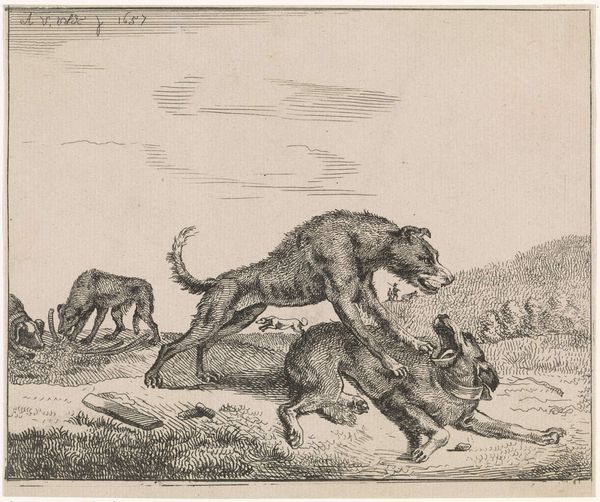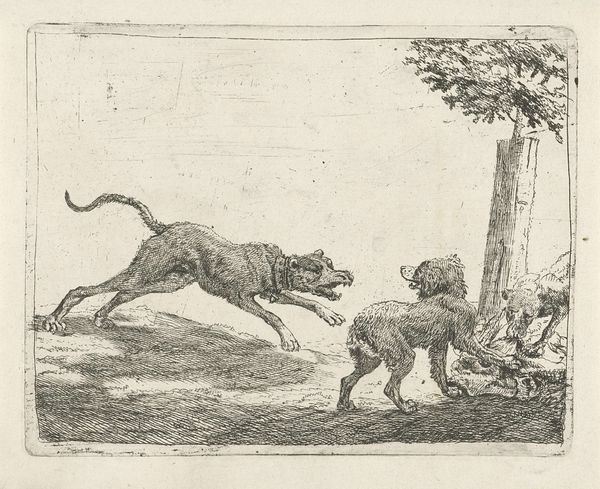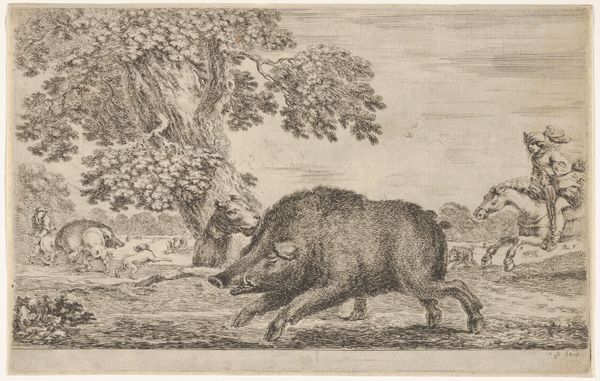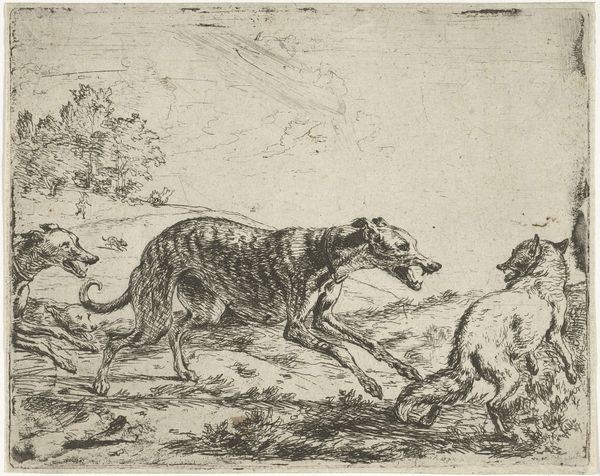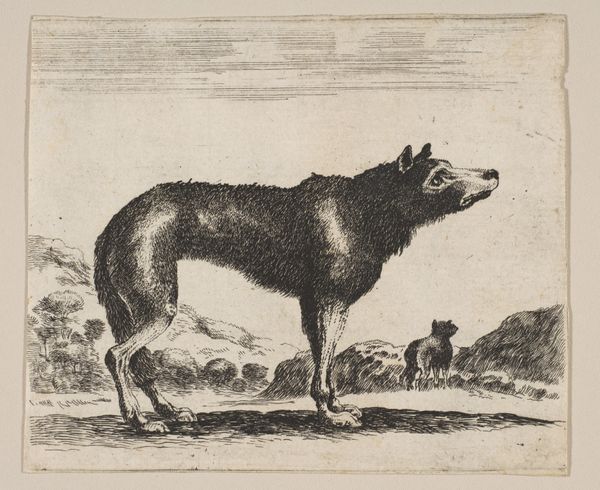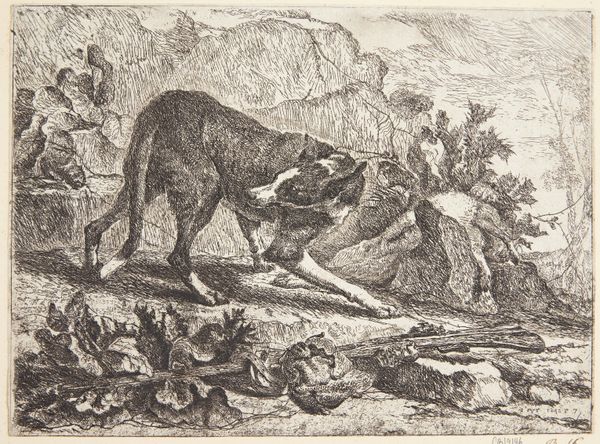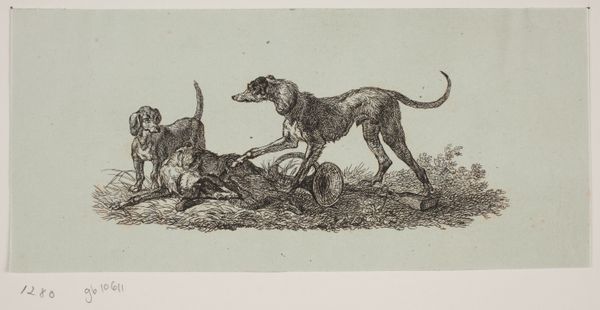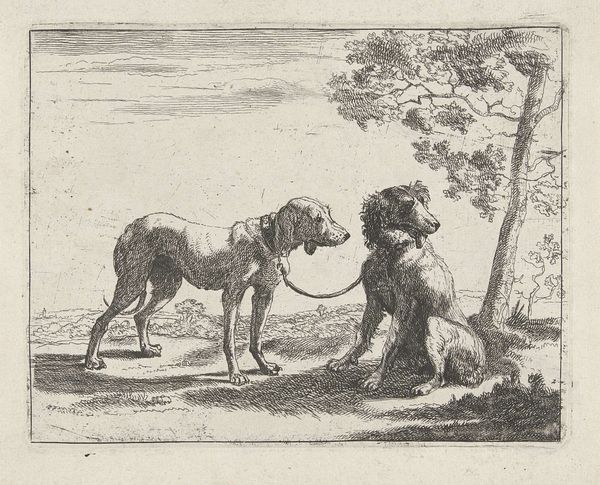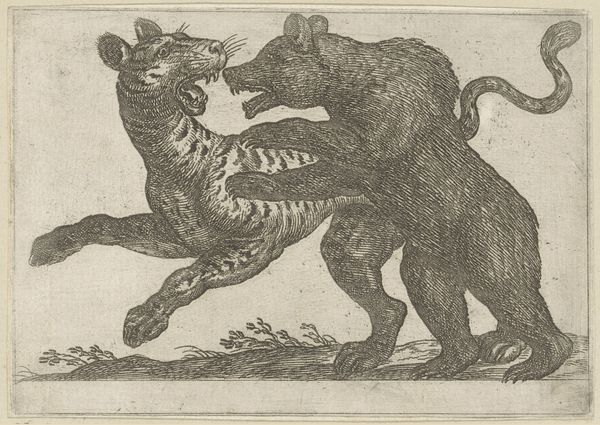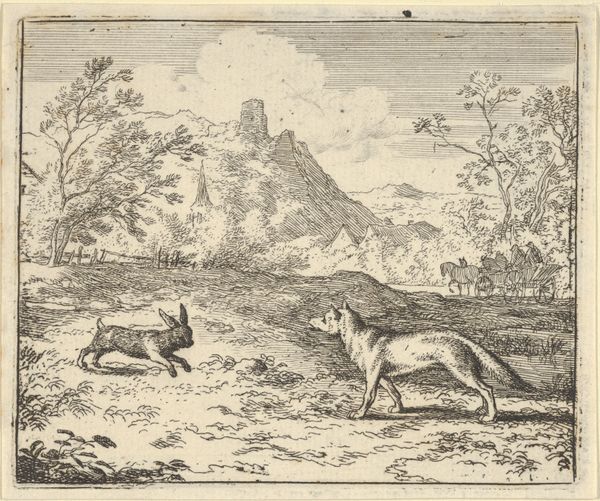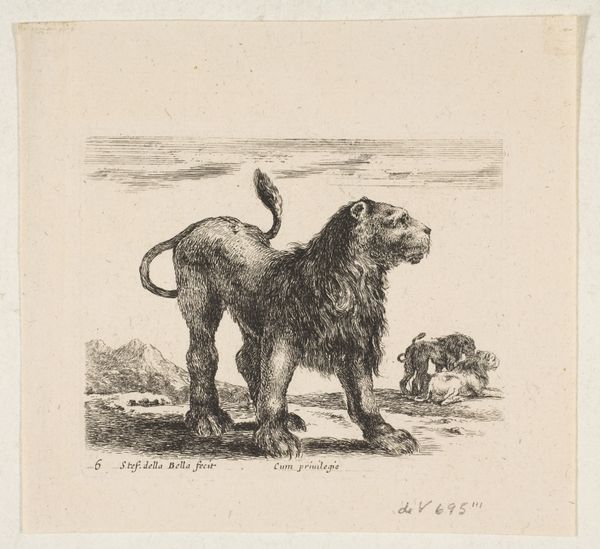
drawing, print, etching
#
drawing
#
animal
#
dutch-golden-age
# print
#
etching
#
dog
#
landscape
#
figuration
#
line
#
genre-painting
#
realism
Dimensions: plate: 4 5/16 x 5 3/8 in. (11 x 13.6 cm) sheet: 4 3/4 x 5 11/16 in. (12 x 14.4 cm)
Copyright: Public Domain
Curator: Alright, let’s discuss "Fighting Dogs, from Different Animals," an etching by Adriaen van de Velde, created in 1657. It's part of the Met's collection. Editor: It’s immediately striking how raw and immediate this image feels, even across the centuries. The stark lines, the sheer dynamism—it's all so... visceral. Curator: That immediacy, I think, stems from its engagement with contemporary society. Consider the context. Genre scenes like these became popular, reflecting a growing mercantile class in the Dutch Golden Age and their fascination with the everyday, including, apparently, canine aggression. Editor: Indeed. Looking at the line work itself, note how van de Velde uses short, almost frantic strokes to convey movement and texture, especially in the dogs' fur. The contrast between light and shadow further emphasizes the tension, focusing our eyes on the conflict. The overall composition is brilliant, even though it’s so simple. Curator: The seemingly straightforward realism is worth digging into. Images of animals in art often served allegorical purposes. We might ask what these battling dogs represent in a society marked by increasing trade wars and competition for resources? Are these canines stand-ins for national rivalries or class conflict? Editor: That’s interesting… While there's potential for allegory, I'm also drawn to the purity of form. The anatomical accuracy of the dogs, the suggestion of landscape with minimal detail…it elevates the subject beyond simple genre painting, revealing Van de Velde's mastery of line and form. Curator: But wouldn't that focus on pure form ignore the etching's possible role in constructing societal norms around animals, even around violence itself? How were these images used, reproduced, circulated, and consumed? We cannot separate the artistry from this historical context. Editor: Fair enough, the distribution certainly played a role. Still, even acknowledging those aspects, appreciating how Van de Velde controlled the lines and form in order to communicate movement is something to enjoy from a purely technical and artistic standpoint. It really has captivated me. Curator: Ultimately, exploring both its form and historical impact opens up fascinating dialogues around representation, social structures, and the enduring appeal of conflict in art. Editor: And recognizing his deft application of line helps to clarify exactly why it is enduring.
Comments
No comments
Be the first to comment and join the conversation on the ultimate creative platform.
